I have a 250 Wp solar panel on the roof of my work van, which is connected with an MPPT 75-15 to the starter battery of this vehicle.
The battery is only 1 year old, but is playing up (sometimes doesn't have enough power to crank the engine). This battery died very fast, so I started investigating.
But now I see that the MPPT is actually sending up to 17 volt to the battery when charging in sunny conditions. I can now imagine why my battery is broken already. Is seems it has been systematically overcharged.
Any ideas how this can happen? Is this MPPT broken? Or could there be another reason why this high voltage is happening?
Also see screenshots below.
- Home
- Anonymous
- Sign in
- Create
- Spaces
- Grafana
- Node-Red
- Unsupported topics
- Questions & Answers
- Modifications
- Communauté francophone
- Deutschsprachiger Bereich
- Preguntas en Español
- Explore
- Topics
- Questions
- Ideas
- Articles
- Badges
question
Why is MPPT charging up to 17 volt?
Some screenshots of the situation
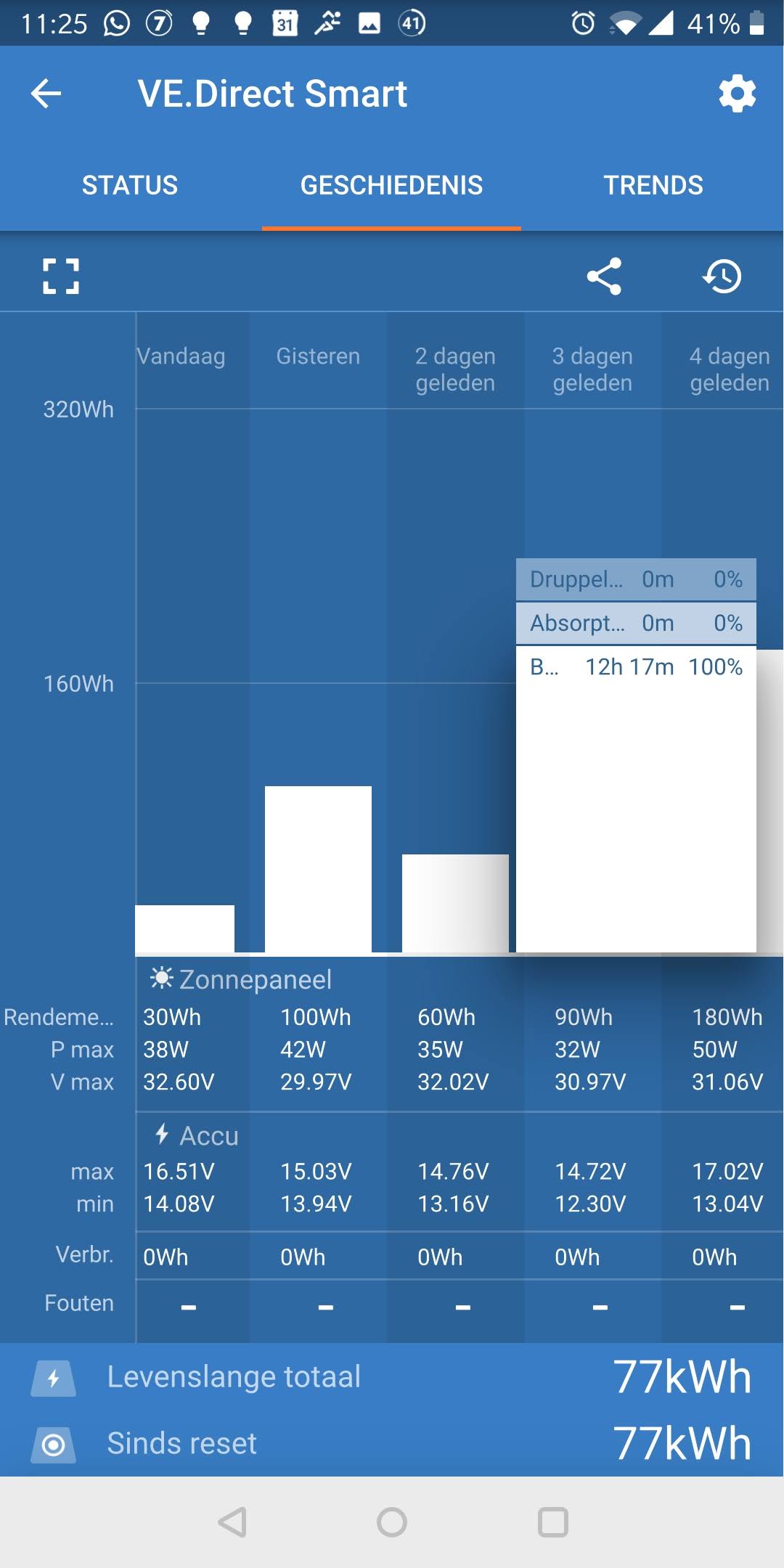
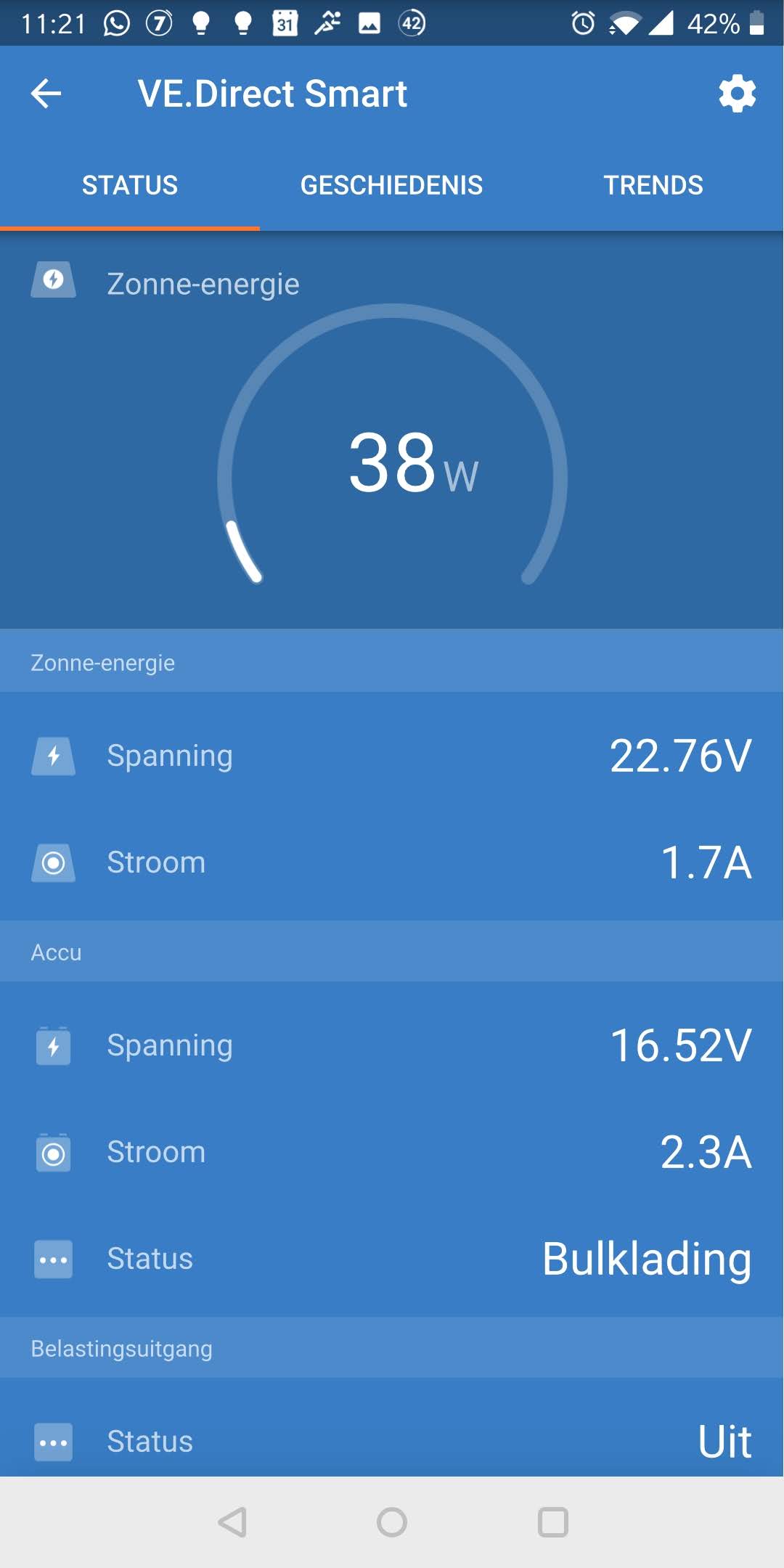
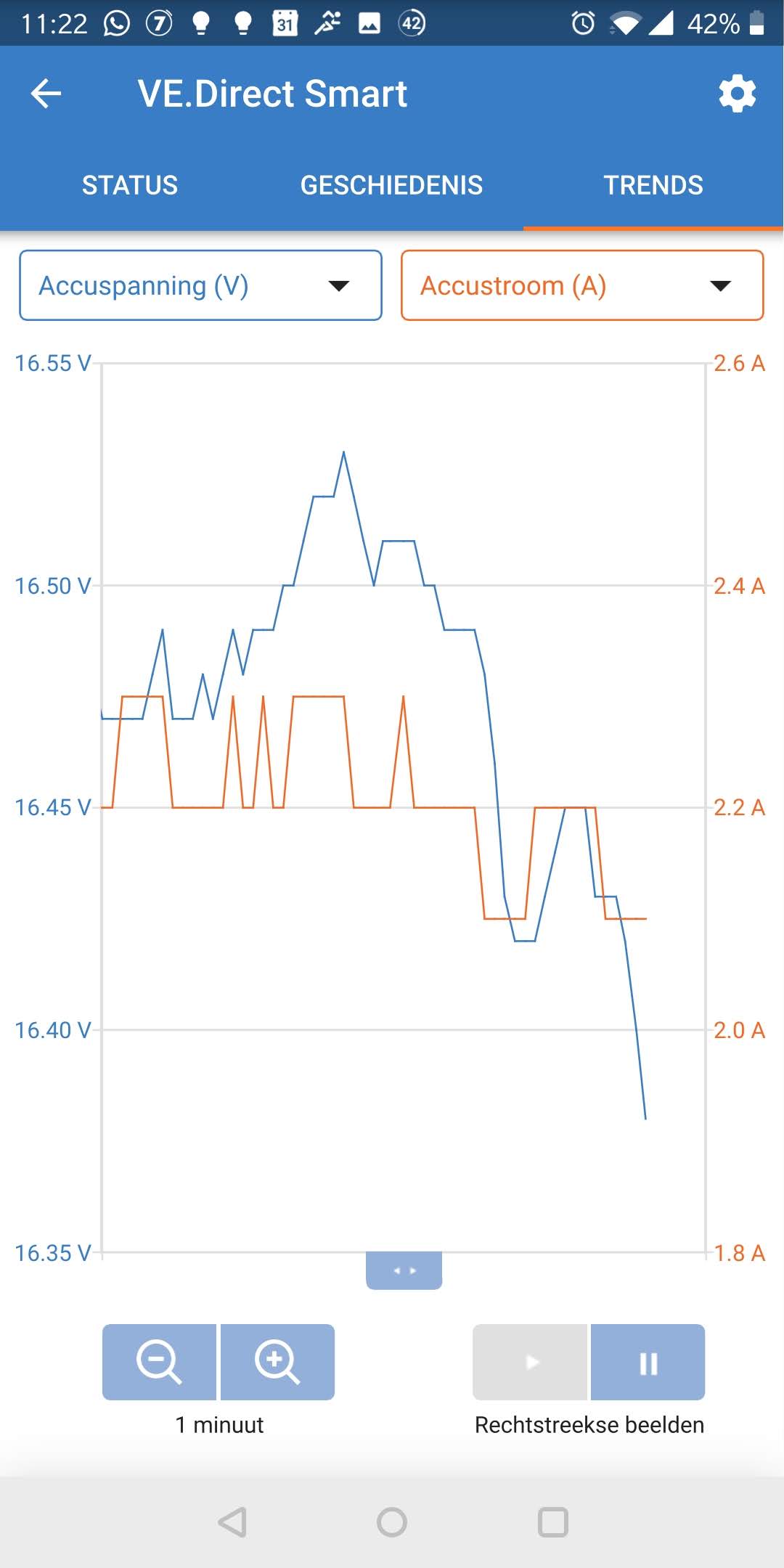

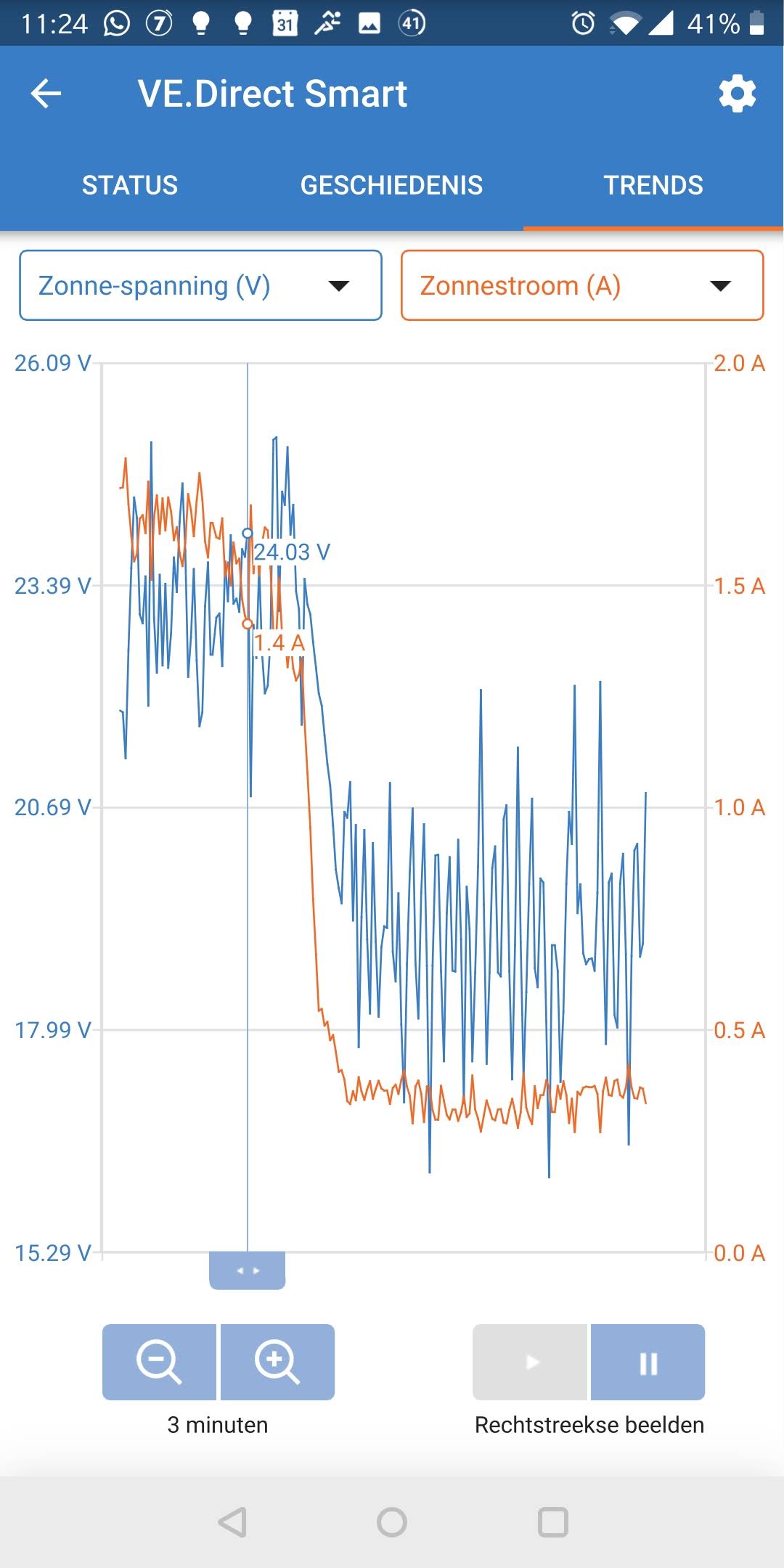
Hi Guy, thanks for your reply.
Ok, from the settings the problem was obvious... The MPPT controller was set to 24 volt. I used it in a 24 volt setup before, so I must have forgotten to change the voltage. Too bad, cost me a battery, but the MPPT doesn't have an issue. (It was a maintenance-free battery, so can't check the electrolyte level.)
But now I would like to make a few suggestings, also to make sure this doesn't happen so easy:
- The MPPT have automatic voltage detection, but with 24 volt batteries it usually recognizes it as 12 volt and with a 48 volt batteries it usually recognizes it as 24 volt. So this is not very reliable.
- If you change over an MPPT controller from for example 24 volt to a 12 volt battery, it stays on 24 volt and then can kill the battery, as happened above.
- Can we not find a way to make it easier to double check the battery voltage? Suggestions:
* Do a voltage detection every time the battery disconnects.
* Not only do the voltage detection, but SHOW the result. (I once spend the better part of a day trying to solve a "high PV voltage error", only to find the voltage detecion was wrong.)
* Show the detected voltage/voltage setting somewhere in the VictronConnect interface main screen.
* I know the software of the MPPT is basic, but would there be a way to detect that something is wrong when the voltage has been detected incorrectly and then actually everything after that doesn't make sense. (In this case the voltage has been between 12 and 17 volt for weeks, with a 24 volt setting. Doesn't make any sense. The controller should throw some sort of alarm...)
The voltage setting was 24 volt, on a 12 volt battery. This caused the strange behavior.
Still a bit strange that the controller would run with this for weeks, thereby killing a 12 volt battery.
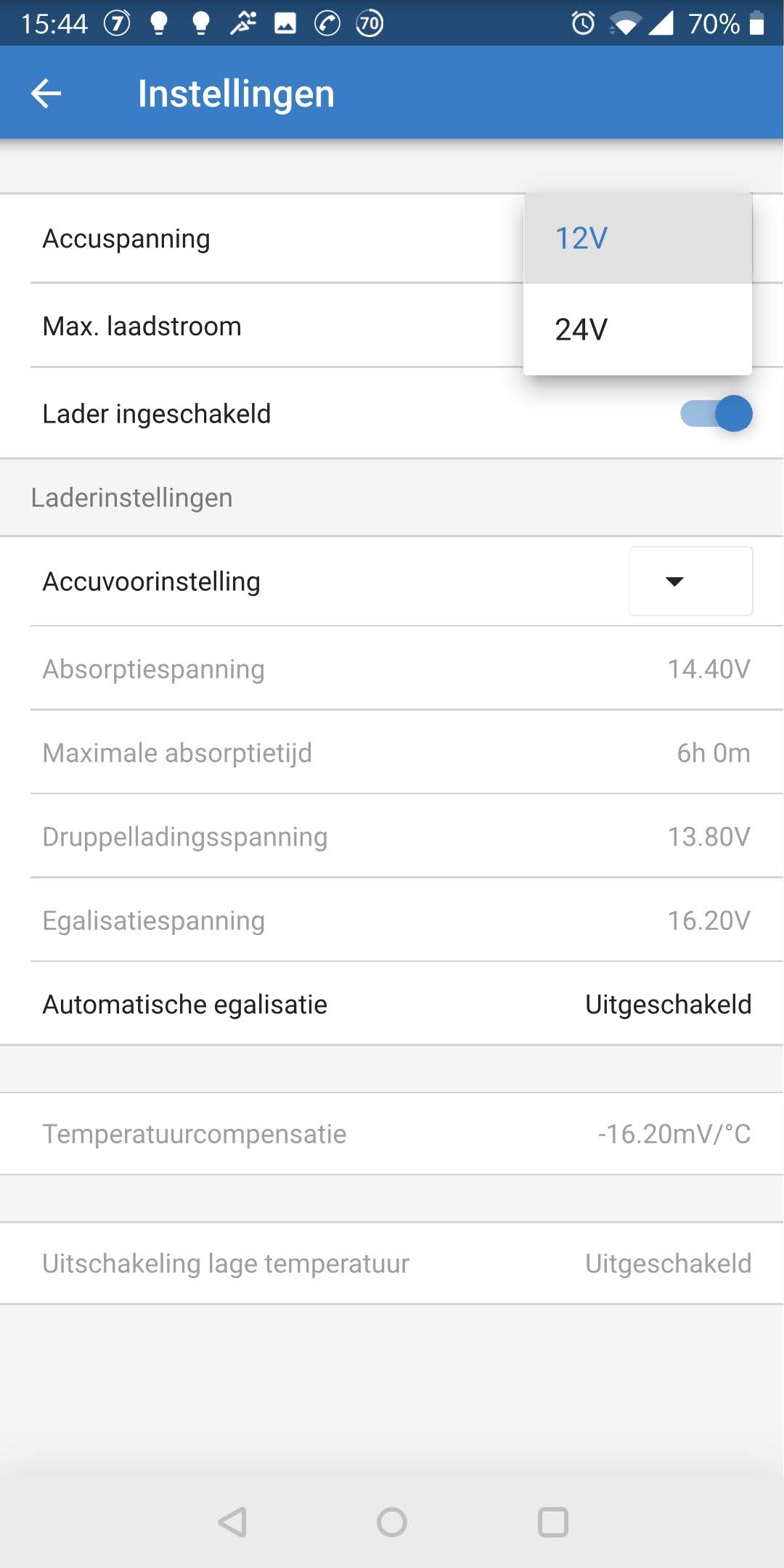
The thing that actually annoys me now is the usability of this product.
If I buy a 10 euro cheap Chinese PWM charge controller, I can hook it up to a 12 or 24 volt battery (and switch between them) and then it will work with the correct voltage settings, out of the box, first time right.
Now I buy an expensive state-of-the-art MPPT charge controller and it gets the voltage wrong. And with that, it kills the battery. Without any notice, whatsoever.
And if a user wouldn't use the Bluetooth connectivity, this user would/could never know. This user would just look at the LED lights, where everything seems to be OK and then exactly the same would happen.
To me it is not acceptable that just a high-end product could bring you in this situation, right out of the box.
Hi Dave,
Can you please post the settings also?
The screens you posted show the MPPT always in the bulk stage, never reaching absorption stage. So something is wrong, but not enough info yet to say where.
Also check the voltage at the battery terminals with a multimeter at the same time. The battery should also be bubbling heavily at these voltages, are you hearing that also?
Check the electrolyte levels (presuming it is a flooded lead acid), are they all the same across the cells?
If you believe there to be an issue with the MPPT, and not the settings, please fill out this form to proceed - click here
It wouldn't matter if it was a 250 watt panel the beautiful thing is the controller limits the current to its rated maximum value in the case of the 75/15 the controller would limit the current to 15 amps. Another would be 100/50 would limit the current to 50 amps and thats all you will see so no harm to add extra panels to get the most out of the controller. Make sure your under the upper limit for the voltage rating and all is good
I don't use my starting battery for cycling purposes, off course. I just used solar to keep the battery full, as the van sometimes sits for weeks unused, usually in the wintertime. The 250 Wp panel is broken (shattered) actually, so I think it's peak output is like 100 Wp. And in the winter it is even less. With a good controller it doesn't actually matter how much Wp I connect to the battery, that's what a controller is for.
Of course it was a bit stupid to only notice the 24 volt setting after such a long time. But that's why I argue to make the voltage setting more obvious on the main screen of the VictronConnect app. Especially if the automatic voltage detection works so poor.
The thing that actually annoys me now is the usability of this product. If I buy a 10 euro cheap Chinese PWM charge controller, I can hook it up to a 12 or 24 volt battery and then it will work with the correct voltage settings, out of the box. Now I buy an expensive state-of-the-art MPPT charge controller and it get the voltage wrong. And it kills the battery. Without any notice, whatsoever. And if a user wouldn't use the Bluetooth connectivity, this user would/could never know. This user would just look at the LED lights, where everything seems to be OK and then exactly the same would happen.
To me it is not acceptable that just a high-end product could bring you in this situation, right out of the box.
Related Resources
MPPT 150/60 up to 250/70 Manual
Additional resources still need to be added for this topic
question details
14 People are following this question.
